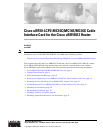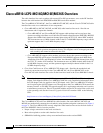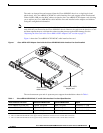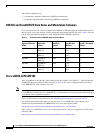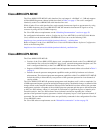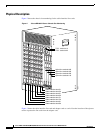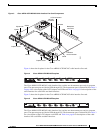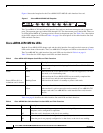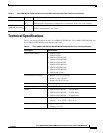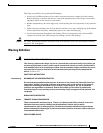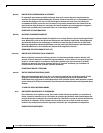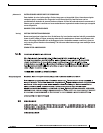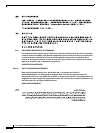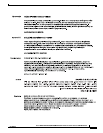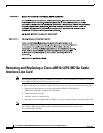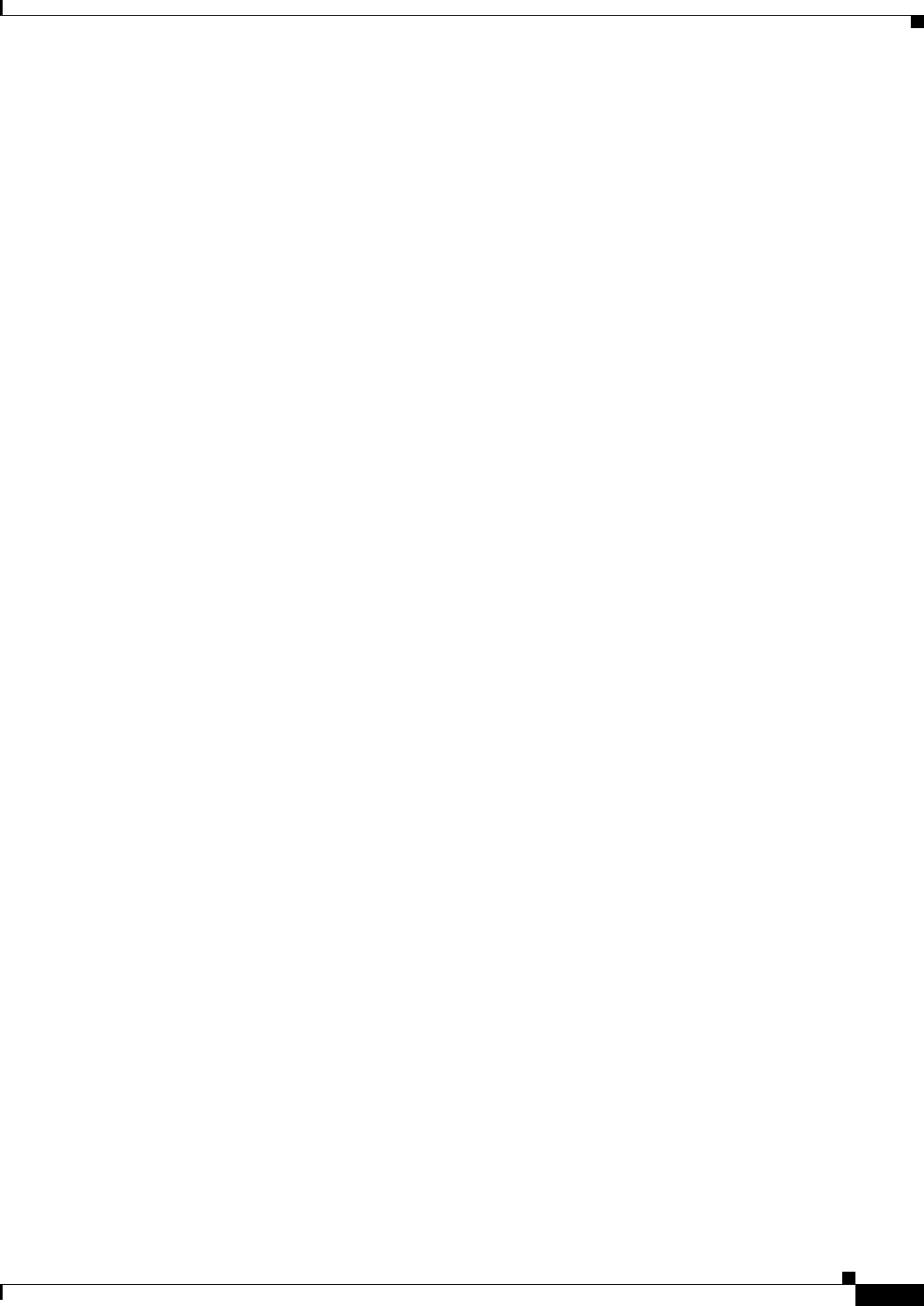
5
Cisco uBR10-LCP2-MC16C/MC16E/MC16S Cable Interface Card for the Cisco uBR10012 Router
OL-2872-02
Cisco uBR10-LCP2-MC16C/MC16E/MC16S Overview
Cisco uBR10-LCP2-MC16E
The Cisco uBR10-LCP2-MC16E cable interface line card output is +40 dBmV +/– 3 dB and supports
all EuroDOCSIS upstream channel widths described in Table 2 on page 4. The card is configured
identically to the Cisco uBR-MC16E cable interface line card.
While all other Cisco cable interface line cards transmit downstream signals to upconverters by using
the 44-MHz frequency, the Cisco uBR10-LCP2-MC16E transmits downstream IF signals to an up
converter by using the 36.125-MHz frequency.
For Cisco IOS software requirements see the “Obtaining Documentation” section on page 29.
For configuration information, refer to Configuring the Cisco uBR7200 Series MC16E Cable Modem
Card, available on the documentation CD-ROM and Cisco.com or at the following URL:
http://www.cisco.com/univercd/cc/td/doc/product/cable/cab_r_sw/index.htm
Refer to Chapter 3 in the Cisco uBR7200 Series Universal Broadband Router Software Configuration
Guide at the following URL:
http://www.cisco.com/univercd/cc/td/doc/product/cable/cab_rout/index.htm
Cisco uBR10-LCP2-MC16S
The Cisco uBR10-LCP2-MC16S:
• Consists of the Cisco uBR10-LCP2 adapter card, a motherboard (based on the Cisco uBR-MC16C
cable interface line card) and an additional “piggy-back” spectrum management daughter card. The
card is configured identically to the Cisco uBR-MC16S cable interface line card.
• Supports all DOCSIS downstream symbol rates and upstream channel widths as described in Table 2
on page 4.
• Features advanced spectrum management capabilities made possible by hardware and software
enhancements. The advanced spectrum management capabilities of the Cisco uBR10-LCP2-MC16S
include the ability to hierarchically scan portions of the upstream spectrum for clean channels of
varying widths.
The Cisco uBR10-LCP2-MC16S spectrum management card (daughter card) is able to sample the 5 to
42 MHz upstream frequency spectrum and initiate frequency hops, modulation change, or channel-width
changes based on the sampled information. When specified thresholds have been reached, the spectrum
management card takes a snapshot of the available upstream spectrum and then passes this information
to the Cisco IOS software, where it is analyzed for indications of significant ingress or impulse noise.
From this analysis, the Cisco IOS software draws informed conclusions regarding the “cleanest”
portions of the upstream frequency spectrum to initiate a frequency hop to a clean upstream channel, if
warranted. The user-defined threshold values are specified by commands in the configuration file of the
Cisco uBR10012 router.
For Cisco IOS software requirements see the “Related Documentation” section on page 28.



